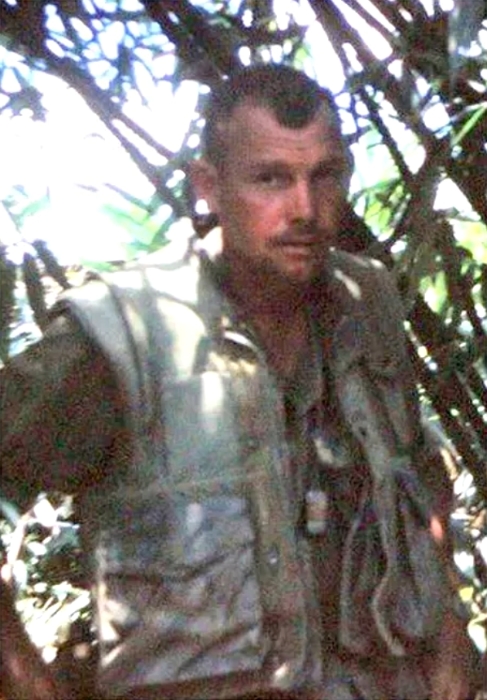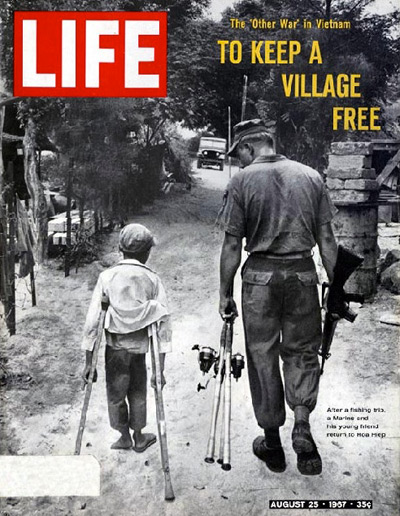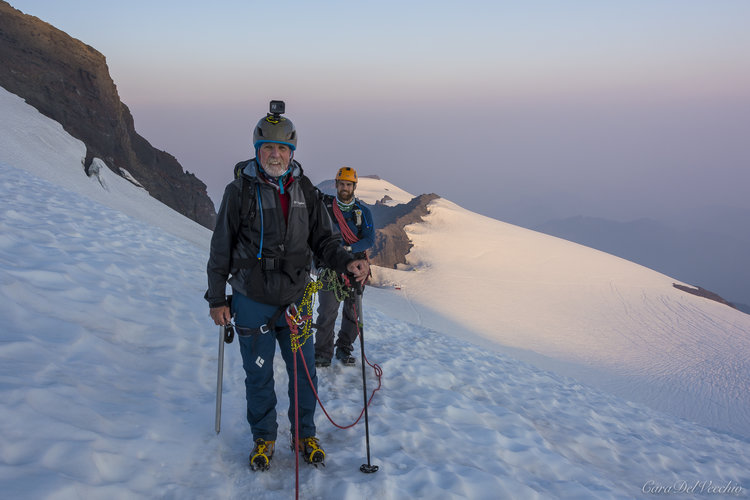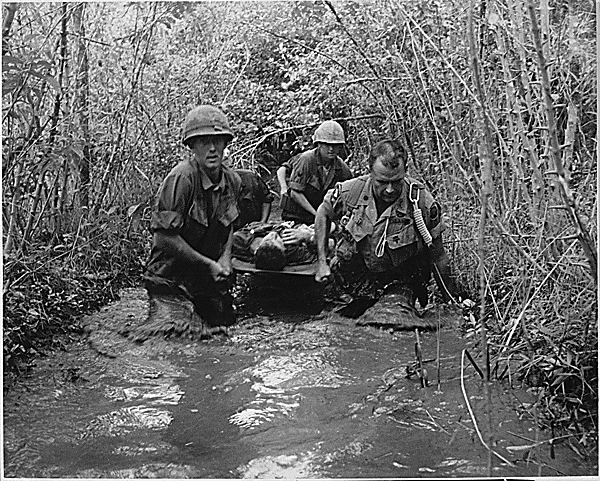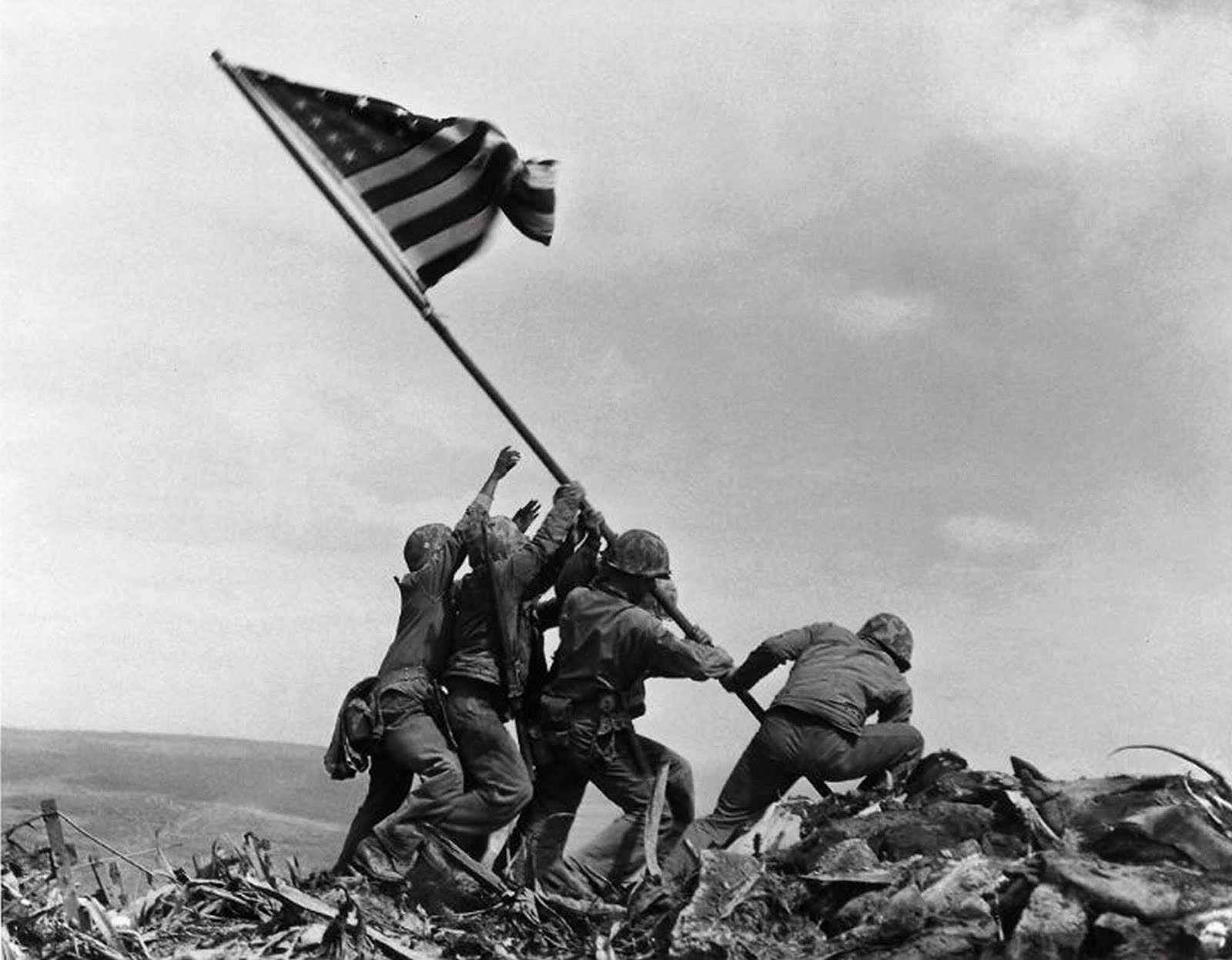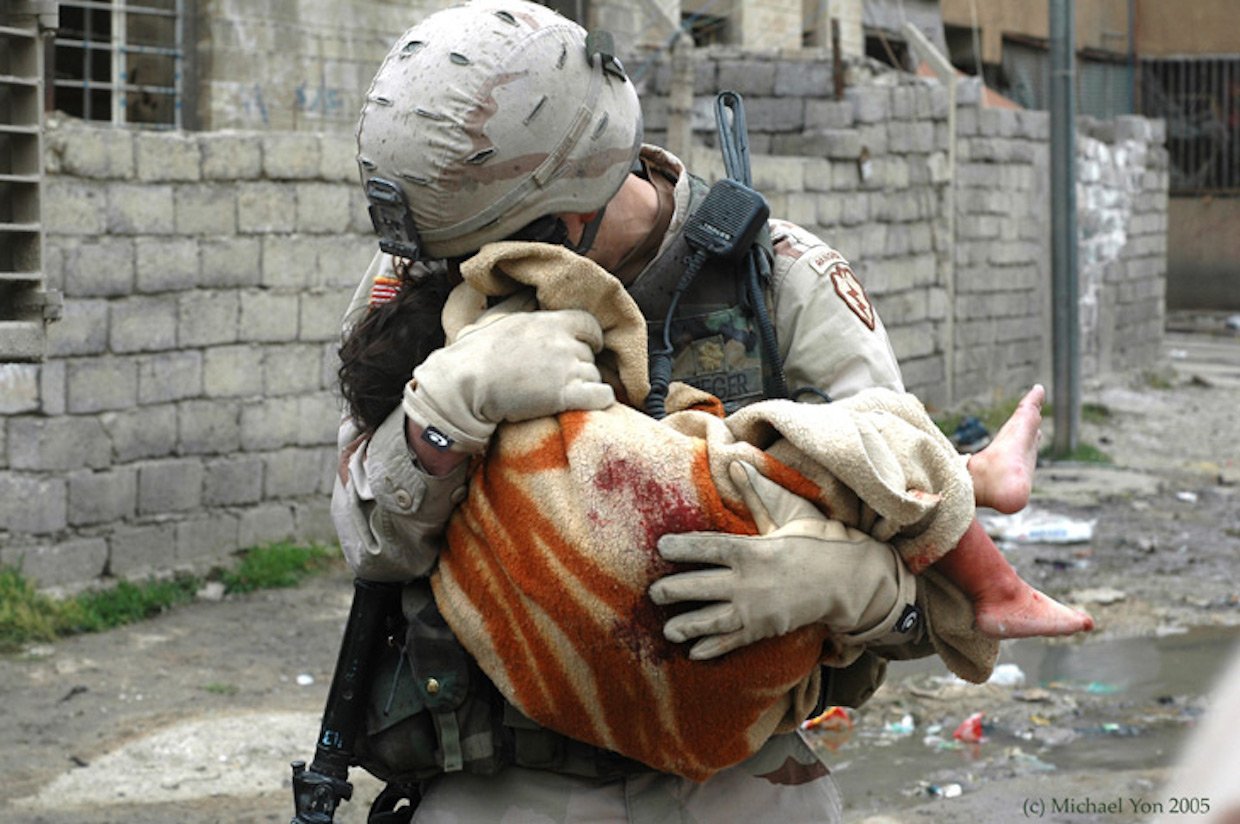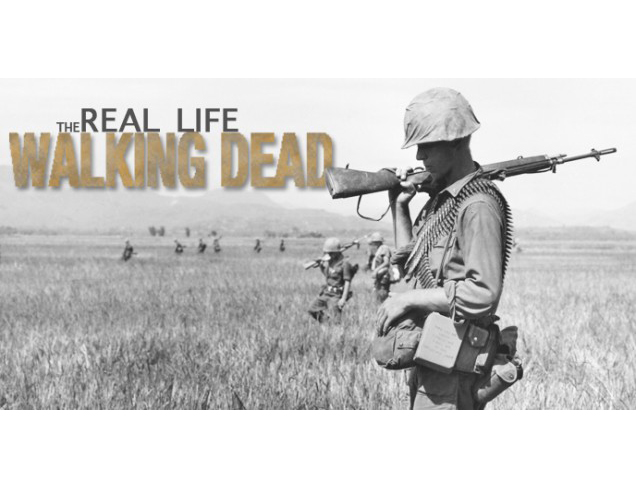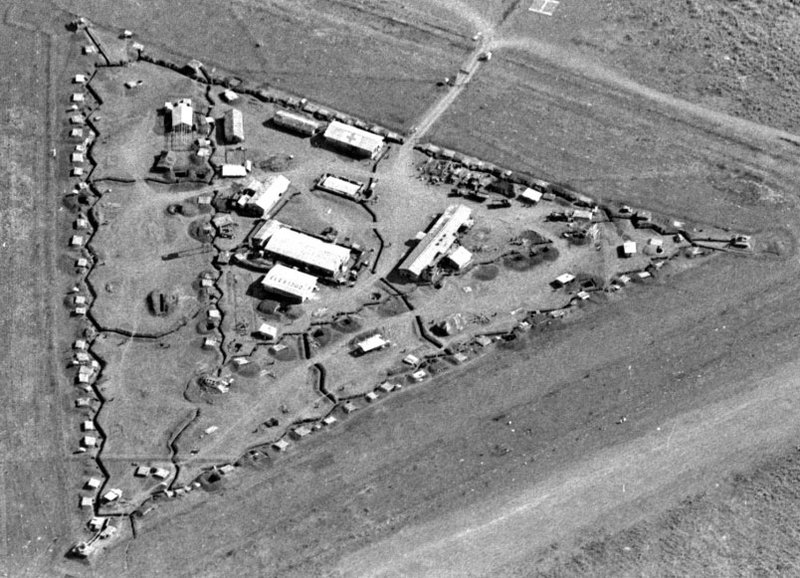This article first appeared in the November 1998 issue of Proceedings magazine, earning my father, Maj. Gen. J.D. Lynch, USMC (Ret.), author of the year. With his permission, I’m repurposing it for a Memorial Day tribute. It is a story of the price paid by grunts for the incompetence of higher headquarters. It is also an elegant testament to the grit, determination, and resilience of American infantrymen thrust into an impossible situation.
The 2d Battalion, 26th Marines, rarely appears in the Marine Corps’ illustrious combat history. The battalion saw only brief service during World War II—long enough to land in the assault wave at Iwo Jima. Later, during the Vietnam War, it reappeared for a few years before its colors were once again returned to the museum curators.
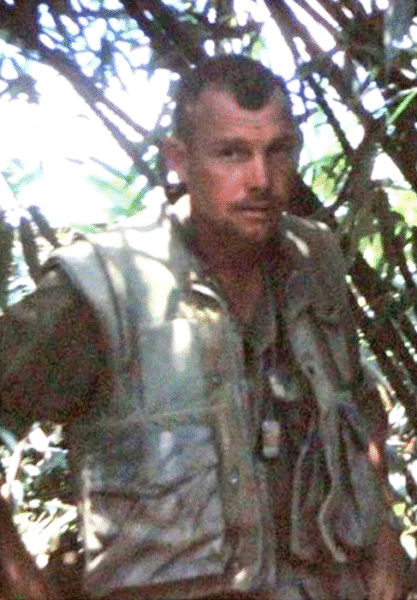
Its daily Vietnam experience was usually far less stressful than the Iwo Jima operation, but Vietnam had its days – and when it did, the late 1960s Marine of 2/26 experienced the horrors of war at the same level of intensity faced by the generation that fought its way up the black ash terraces beneath Mount Suribachi. This is the story of one of those days: 16 September 1968.
Late 1968 found the 3rd Marine Division serving in the extreme north of I Corps, the northernmost corps in what was then the Republic of Vietnam, controlling ten infantry battalions: those of its organic 3rd, 4th, and 9th Marine Regiments, plus 2/26. The division’s operational concept – an effective one – was as easy to understand as it was difficult to execute. Relying on few fixed defensive positions and even fewer infantry units to defend them, the defense was offense. Battalions stayed in the bush for weeks on end, covering North Vietnamese Army (NVA) infiltration routes and, in general, looking for trouble. They moved constantly on foot or by helicopter, and when they encountered an NVA unit, all hell broke loose until it was destroyed.

Our battalion – I was the operational officer – celebrated the Fourth of July in an area near the coast called Leatherneck Square, where it was responsible for defending the square’s northern and western sides. In late July, the battalion was reinforced to conduct amphibious assault operations and designated Battalion Landing Team (BLT) 2/26.
After training with the reinforcements, BLT 2/26 embarked on the Amphibious Ready Group Alfa ships, including the famous World War II Essex-class carrier Princeton (LDH-5), now an amphibious assault ship. Initially, there was talk of landings just south of the Ben Hai River inside the Demilitarized Zone (DMZ), but the pattern of NVA operations had shifted westward, and the amphibious talk died out. An early-September landing well inland marked a temporary end to our amphibious experience and the beginning of service as one of the division’s maneuver battalions. Despite the change in mission, the battalion kept its reinforcements – among them a tank platoon, a 105mm artillery battery, and a 4.2 inch mortar battery.
Operational control shifted to the 3rd Marines, headquartered in Camp Carroll, but several days of aggressive patrolling yielded no enemy contacts. About 7 September, the BLTs’ field elements were trucked to Camp Carroll. They staged for two contingencies: a helicopter assault in Landing Zone (LZ) Margo, a barren hilltop just south of the DMZ, roughly 17 kilometers west-northwest of Camp Carroll – or a shift of operational control to the 4th Marines and return to Khe Sanh, where the battalion had served throughout the early-1968 siege.
To the relief of those who had served at Khe Sanh, the Margo operation prevailed—an assault into the LZ followed by movement north to the high ground on the southern border of the DMZ, where the battalion was to turn east and sweep the high ground. The orders emphasized the need to take prisoners.
A typhoon brushed the coast, and although the tree-covered mountains inland showed no outward signs of rain, movement became impossible—the war ground to a halt. Finally, the weather began to clear, and on 12 September, the commanding officer of the supporting helicopter squadron flew in for the Zippo brief – a planning and coordination meeting attended by the battalion and squadron commanders and their staffs.
Zippos were businesslike affairs. Lives were at stake, and the assaulting battalion and supporting squadron had to reach complete agreement and understanding. On the plus side, Margo was easy to find due to its location on the north side of the Cam Lo River, inside a distinctive, kilometer-wide and more than kilometer-deep U-shaped bend. Unfortunately, this plus was offset by several minuses, most of which stemmed from the tiresome but necessary subject of terrain.
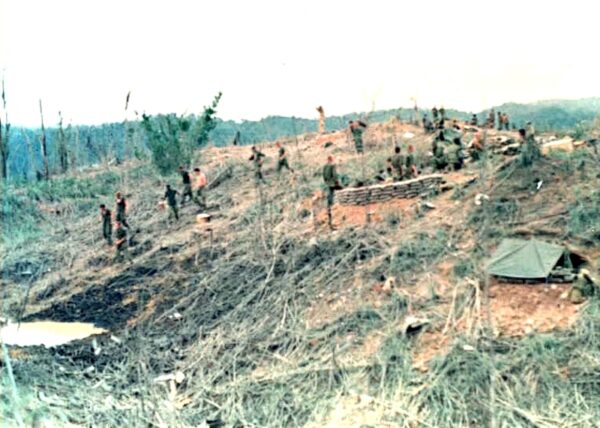
Margo, which resembled a broken bowl, was smaller than the maps indicated. Using north as 12 o’clock, the rim from 5 to 10 o’clock was the dominant piece of ground within the LZ. The southern side of the rim dropped sharply to the Cam Lo River, actually more stream than river at this point, while the interior slope provided good observation over the landing zone and north toward the DMZ. A spring near the center of the zone fed a stream that had cut a deep draw, which meandered eastward and exited Margo between 2 and 4 o’clock. From 10 to 2 o’clock, Margo’s northern rim varied in height but was lower than the southern rim. Its exterior sloped sharply downward for a kilometer or so before reaching the steep approaches to the terrain fingers that led to the high ground in the DMZ. At its highest point, Margo was about 150 meters above sea level. The hills to the north were three to four times that height, while the intervening terrain dropped to low points of about 50 meters.
It was rugged, forbidding country, made all the more so because, although Margo was clear, the heights and intervening areas were covered with double – or triple-canopy forest.
The terrain inside the LZ made Margo a “one-bird zone” – helicopters had to land and unload one at a time. This was hardly unusual, but it slowed the rate of assault dramatically. Margo was also too small to accommodate the entire BLT. Since the intent was to retain only G company, the BLT command group, along with the 81mm mortar, engineer, and reconnaissance platoons, in the zone for any length of time (a few days), the size of the LZ did not seem to be a major factor. Its rock-hard soil, however, was another problem. Digging in took time.
Finally, there was Margo’s history. For a brief period, some months before, it had been used as an artillery fire support base, and the North Vietnamese were known to keep such positions under observation. The terrain and history summed to the point that BLT 2/26 was landing, one aircraft at a time, into a zone that was:
- Too small to hold the entire BLT
- Dominated by high ground to the north
- Probably the subject of continuing NVA attention, at least to the point of registering mortar fires.
Not good . . . but not unusual.
Friday the 13th of September 1968, a date not lost on many of the Marines, marked the beginning of several days of cloudless skies and comfortable temperatures. By 0700, a thousand or so Marines and corpsmen were waiting quietly in the Camp Carroll pick-up zone, smoking, talking, thinking, and maybe – especially in Golf Company – which was landing first – praying. They were grunts, a term coined during the Vietnam War. While it may have been a derisive term, the sting was long gone. With a certain pride, it is what they called themselves.
Believing that the chances of infection dramatically increased with the amount of clothing worn when wounded, they were deliberately underdressed. Boots, socks, and trousers were the standard: no underwear and often no shirt during the day. Their faded helmet covers sported an elastic band around the outside intended to hold camouflage material when the wearer sought invisibility in the bush. More often, it held either a main battle dressing for use if the wearer’s luck turned bad or, in the case of optimists, a bottle of mosquito repellent. The graffiti on most of the covers addressed a variety of subjects, but many tended toward the religious. David Douglas Duncan’s striking photographs of the 26th Regiment Marines at Khe Sanh captured the phenomenon.
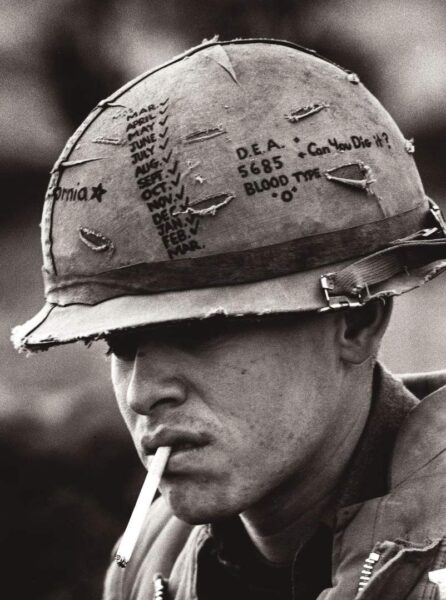
They all wore flak jackets, never zippered because shell or grenade fragments taken in the wrong place could jam the zipper, making it difficult for the corpsmen to remove the jacket and treat the wounded man in the field.
The flak jackets, if anything, were dirtier than the helmet covers. Sweat-stained from long wear by a series of owners, they had the same faded color as the camouflage covers, but their graffiti, for whatever reason, tended to more basic thoughts than those found on helmets.
They carried a haversack holding a box of venerable C-rations, a poncho, a poncho liner, and, most importantly, an extra two or three pairs of socks. They also carried extra radio batteries, mortar ammunition (although not mortarmen), rocket launchers, grenades, at least four filled canteens, and as much extra rifle and machine gun ammunition as possible.
They were typical grunts and corpsmen, normally unwashed, usually underfed, always overloaded, and, more often than not, tired. The lucky ones, those who avoided disease, wounds, or death, did not enjoy a hot meal or cold shower for weeks.
Shortly before 0800, the CH-46s began landing in the pickup zone with their distinctive whumping blade sound – unforgettable for those who rode them into combat. As the first wave launched, the sound of the artillery preparatory fires in the distance and the roar of the fast movers orbiting overhead helped ease the tension.
The actual landing was anti-climactic. Although there was no opposition, it still took a considerable amount of time. Echo, Fox, and Hotel companies quickly assembled and began moving north. Echo struck out for the finger on the right, which led to the high ground, while Fox and Hotel headed up the other finger on the left. Golf Company, the command post, the 81mm platoon, and others established defensive positions in the LZ and began digging in. Friday the 13th passed quietly.

On Saturday, 14 September, the companies continued moving north at first light. While there were well-worn trails in the area and occasional sounds of movement ahead, there were no contacts. Even so, the companies called artillery fire on possible targets to keep the fire-support system active. About midday, Hotel Company’s point, leading movement up the left finger, saw movement ahead and signaled the company to move off the trail and wait. Their patience was rewarded as they watched a North Vietnamese soldier, weapon at sling arms, striding down the trail toward them.
The point team was in an excellent ambush position and easily could have killed him. That they didn’t was a testimony to discipline and the emphasis on taking prisoners. Waiting until the NVA soldier had passed, the point man re-entered the trail and, in Vietnamese, ordered him to halt, which he did promptly. The capture was reported to the company commander, relayed to battalion, and within a matter of minutes, the 3rd Marines had learned of a potential guest speaker. Within the hour, the prisoner had been flown to Camp Carroll for interrogation.
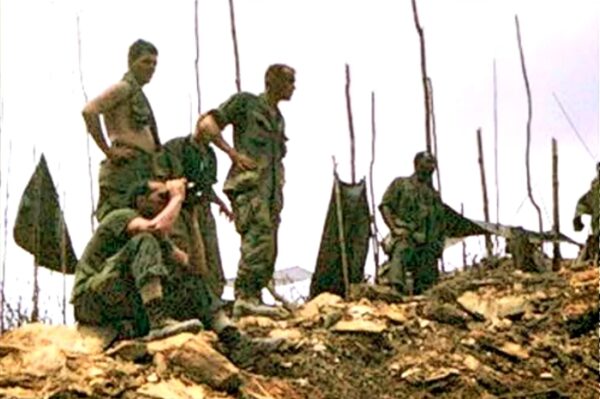
Throughout the war, most higher headquarters consistently failed to pass timely intelligence information down to the battalion level, where it could be acted upon. The 3rd Marines did not make that mistake. Just before sundown, 2/26 learned that the prisoner had intended to surrender because he had been at Khe Sanh when the Marines first arrived. Stating that he “had a love of life,” he added that he wanted no more of anything remotely resembling that battle, a confrontation that had a psychological hold on both sides. Of greater interest was his disclosure that the lead company – Hotel Company – would be attacked at about 2000 that evening. All three companies were alerted.
Echo, Fox, and Hotel halted for the night and began registering artillery defensive fires. Hotel Company’s artillery forward observer (FO), controlling a supporting 155mm howitzer battery, had just started registering fires to cover a listening post located on the western side of the finger when the Marines manning the post reported hearing movement through the draw to their direct front. Since the registration rounds were on the way, they could only wait. Seconds later, as the roar of the explosions died away, the listening post reported screams and other sounds of panic. The FO immediately called “fire for effect” and swept the draw with 155mm rounds. Other than some moans and the sounds of some movement in the draw, the remainder of the night was quiet.
15 September dawned clear and cloudless. Visibility was so good that Marines could watch outgoing 81mm mortar rounds until they reached their apogee. Again, keeping the mortar and artillery fire support systems active, E, F, and H companies resumed their slow climb toward the high ground. Signs of enemy presence were plentiful, but there was no contact.

The trouble started at noon, when a radio message from 3rd Marines ordered the BLT to pull its companies back to the LZ and prepare to shift operational control to the 9th Marines. The message was cryptic – it had to be because none of the radio transmissions with any of the battalions in the 3rd Marine Division’s area were secure. The encryption equipment of the day was too heavy to be carried in the field and, in any case, seldom worked in the heat and humidity of the bush. Problems with getting shackle sheets (code) down to the company level precluded using even decades-old encryption. Everyone assumed that the North Vietnamese heard most of the radio traffic.
Communications security problems notwithstanding, the order was received with incredulity. There was little doubt that the NVA would follow the companies back to the landing zone, and less doubt that mortar and perhaps infantry attacks would follow. The three rifle companies were told to halt and then move south to Margo; meanwhile, the order was strenuously argued. The regimental commander made it clear that he agreed with the battalion’s tactical assessment of what lay in store. Obedience would have a price; that much was obvious. What was not obvious was how much.
After a few hours, the three companies were instructed to halt, reorient, and resume their original northwest advance. We had to know if the trailing enemy theory was correct. The order did not specify how long to follow the reverse course, but did tell the company commander something they already knew – to expect contact. It came quickly on both ridges as small NVA units were surprised to find the Marines heading north again. Breaking contact, the companies once more turned south toward Margo. So far as 2/26 was concerned, the point had been proven. We reported this to the 3rd Marines and forcefully recommended cancellation of the withdrawal order.
The reply was more enlightening than helpful. The battalion was told that its arguing and temporary resumption of the offensive had caused some difficulties (it wasn’t phrased quite that way) and that there would be a 24-hour postponement. Furthermore, the entire battalion was to concentrate in LZ Margo, south of the 61 grid line – an east-west map line that split the LZ – by a specified time early the next afternoon, 16 September. In the meantime, the BLT was authorized to take whatever actions it deemed necessary to prepare for the return to the LZ. The maneuver companies were turned north again; within minutes, they bumped into NVA troops following them down the ridgelines.
The enlightening section of the order was the part about moving south of the 61 grid line. It made no sense because the area remaining in the LZ south of the grid line was too small to accommodate the BLT in anything resembling a tactical position. Even worse, it did not permit defense of the LZ, especially against infantry attacks coming from the most logical direction – north. It was apparent that the order had emanated from a headquarters other than regimental or division, neither of which would have displayed that level of tactical ignorance. This, and the urgency associated with the 61 grid-line provision, led to the conclusion that an Arc Light – a high-altitude B-52 area bombing mission – was imminent.
It might seem strange to those steeped in the traditions of obedience to orders, but the BLT now confronted a dilemma. If its tactical assessment were correct, the order returning the maneuver units to the LZ would result in some form of NVA attack: if, on the other hand, the Arc Light guess was right, there were other problems. The timing and target area were unknowns and, for security, would remain unknowns at the battalion level. Further, the tactically inane directive to move south of the 61 grid line indicated that the Arc Light was going in north of Margo – but close.
The dilemma was stark and straightforward: Comply with the order and risk NVA action, or move the companies toward Margo, retaining some semblance of tactical deployment north of the LZ, and risk the Arc Light. To those who have seen a proper Arc Light, the choice was easy. The companies were directed to hold in place and begin moving south to the LZ early the next morning. But as a concession to common sense, that portion of the order regarding the 61 grid line was interpreted rather loosely. We would defend Margo.
The weather on 16 September matched the brilliance of previous days. Today, the Vietnamese Bureau of Tourism would tout the weather; on that day in 1968, however, it turned into a scene from hell.
Occasionally stopping to engage the NVA units following them, the three rifle companies slowly made their way back to Margo. Echo company came in last. Commanded by Captain John Cregan, now a Roman Catholic priest, the company began to climb Margo’s northern slope and, by approximately 1430, was taking up its assigned defensive positions on the northern perimeter. Even after ignoring the order to stay south of the 61 grid line, there were too many troops in too small an area – and they had to contend with Margo’s rock-hard ground. Digging in took more time.

Early in the afternoon, ominous sightings of North Vietnamese soldiers with mortars fording the Cam Lo River west of Margo were reported. Artillery fire was called, probably without effect. At the same time, there was a minor flurry of activity as the BLT shifted to the operational control of the 9th Marines, and radio frequencies were changed and tested. That done, the chatter of troops and the clanging of their entrenching tools were the only sounds disturbing the quiet.
At 1500, Captain Ken Dewey, an F-4 pilot serving as the battalion’s air liaison officer, was looking north toward the left of the two hills that had been the original objectives when suddenly a mirror started flashing – followed immediately by the soft “thunking” sound of mortars firing in the distance. Within seconds, Margo was blanketed with exploding 82mm rounds from several compass points, especially the northern arc. The battalion began its “time on the cross,” as the French put it earlier in the Indochina War.
The noise was deafening. Each explosion filled the surrounding air with black, stinking, greasy-tasting smoke. The mortarmen poured it on until 200 to 300 rounds had pummeled the Marines and corpsmen, a good percentage of whom had no protection beyond that of shallow fighting holes. As the fire eased, the LZ sprang to life and First Lieutenant Al Green’s 81mm platoon began counterbattery fires, an action that won them concentrated NVA attention.
Battalion machine gunners on Margo’s southern rim saw some enemy mortarmen and began to engage them at long range – attracting in turn, their share of incoming. The exchange continued for a few minutes until a mirror on the high ground flashed again. The incoming barrage slowed, then stopped – but the noise in the LZ grew to deafening proportions as hundreds of rifles went into action. At first, it seemed as if frustrated Marine riflemen were wasting ammunition on out-of-range NVA mortarmen, but a radio query to First Lieutenant Bob Riordan, the Golf Company Commander, revealed that from his position on the southern rim, North Vietnamese soldiers could be seen moving uphill to assault the LZ’s northern side.
Then the rifle fire stopped abruptly, and, within seconds, the southern rim and center of the LZ was alive with Marines running to the northern side. Their fires had been masked by those manning the northern slope defenses, and they were leaving their own positions to get into the fight. The enemy never has a chance. The NVA commander who ordered the assault likely had fewer troops than he thought, due to previous contacts. In any case, the reactions of the defenders were too violent. No more than 20 minutes had elapsed. The cost to BLT 2/26 was more than 150 dead and wounded. The cost to the enemy was unknown.

At 1700, the mirror flashed again, and the mortars went to work. Once more, rounds rained down on Margo – fewer this time and without an infantry attack – but the BLT’s casualty list grew longer. For the first time since the attacks began, medical evacuation of the wounded now seemed possible. It was likely that the NVA had expended most of their mortar ammunition and would not interfere with the helicopter evacuation.
The casualties had been separated by category . . . emergency, priority, and routine . . . and the “permanent routine,” a euphemism for the dead that had crept into the radio operator’s lexicon. We hoped to medevac at least the emergency and priority wounded before nightfall. Several CH-46As and gunships arrived about 1830, and the laborious process of loading the casualties, one at a time, began as soon as the lead bird touched down.
As usual, the strength and example can be found in the casualties. I saw Staff Sergeant Donner from the reconnaissance platoon, covered in blood, as he was being escorted to the medevac staging area. He was refusing to leave, insisting that he was okay. I told him that he would leave.
Late in the afternoon of 16 September, I watched as an unwounded Marine rapidly searched the rows of wounded looking for a friend. Suddenly, a large arm reached out and waved. “There you are” said the first as he took the wounded man’s hand and squatted down to talk. They held hands quietly until the medevac helicopters arrived. The wounded Marine had been hit badly. I do not know if he survived. Nor do I know if his friend survived our subsequent encounters with the NVA. What I do know is that the wounded Marine was black and his buddy white. I remembered thinking at the time how much better people would be if we were all like those two.
Recently, we have been told that the best and the brightest did not go to Vietnam. When I heard that, I thought of those two Marines so long ago, the hardships they endured, and their obvious respect for each other. Maybe they weren’t the brightest, but they were the best.
Realizing that there would be no other medevacs from Margo that night, the last pilot insisted on overloading his aircraft with wounded. Over his objections, the loading stopped, and the pilot was told to launch. He must have been good. If not good, he was very lucky. The overloaded 46 resembled a giant praying mantis as it struggled into the air, tail down, nose swinging back and forth in a wide arc, as though searching for escape from a trap. Finally, he nursed it a few feet higher, leveled, and began slipping sideways, just above the trees, down the slope that formed Margo’s northern rim. Again, the LZ filled with Marines running north; convinced that the 46 was about to crash, they were moving to assist the survivors.
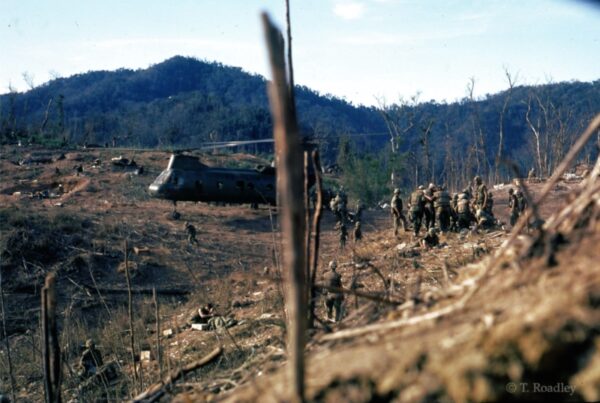
The helicopter disappeared from view behind the trees and, an eternity later, came back into view, this time in full flight, nose-high on a southernly course, jettisoning fuel to lighten the load and clear the ridge to Margo’s east. All movement stopped as everyone in the LZ watched the miracle claw its way over the ridge line, taking the wounded to safety.
Quiet settled over Margo. As the troops returned to their positions, the silence was broken by a single “thunk” off to the north. This time, it was only one round, but it landed precisely where the medevac birds had loaded. It was Charlie saying he knew what had been done and could have stopped it at any time. He was also saying he was a pro. We knew that already.
The XXIV Corps Commanding General visited Margo the following morning. His worries about morale evaporated as he watched the Marines improving their defensive positions. He then looked toward a large group of wounded waiting to be evacuated. In response to a question, he was told they were the routine medevacs. Behind them were rows of poncho-covered objects. He looked at them, saying nothing, knowing what they were. Finally, a Marine broke the spell. “The dead go last, sir.”
Epilogue
The Arc Light went in five or six kilometers north of Margo on the afternoon of 16 September. Maybe too much had happened, or maybe there was an unusually high number of duds. Regardless, it was unimpressive. Paradoxically, it hurt 2/26 more than it hurt the enemy.
Early on 17 September, Golf, Fox, and Hotel Companies returned to the familiar trails, attacking north. Echo Company, having lost nearly 70 Marines in the mortar and infantry attacks, remained behind. The LZ was mortared twice that day, but there were few casualties. Margo’s final toll will probably never be known precisely. We evacuated more than 200 dead and wounded, some of whom doubtlessly died later. Before we left, we filled 18 external helicopter nets with packs, weapons, and other equipment that was no longer needed.
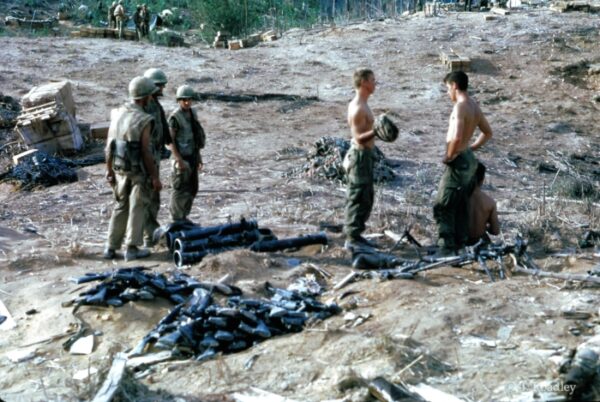
Eventually, after another long period of torrential rains, the attacking companies reached the high ground, where Golf found a graveyard – 18 graves with markers aligned in rows near where the mirror had flashed before the mortar attack. They evacuated a few to confirm that it was a graveyard. They also traced the extensive writing on the markers and sent them to the rear for translation. The writings turned out to be a history of each of the casualties. We learned we had gotten the NVA battalion commanding officer and much of his staff. The CO had been a soldier since joining the Viet Minh in the late 1940s: he was a professional. I think whoever ordered all the writing put on the markers did so, at least in part, so that we would not dig up their dead.
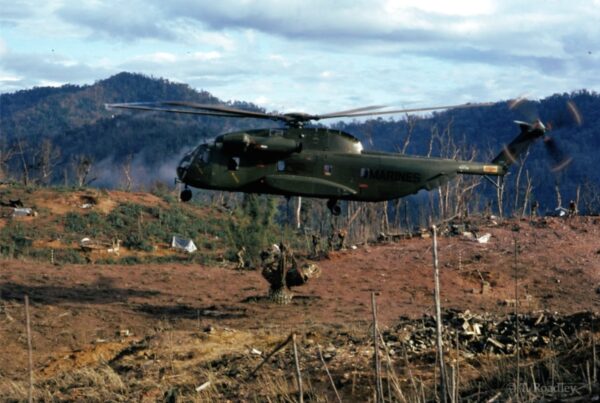
We stood by to attack to the west. It never happened. Near the end of September, the BLT moved by helicopter into another one-bird zone in the DMZ just south of the Ben Hai River, nearly 15 kilometers north and east of Margo. In a series of assaults, BLT 2/26 routed an enemy force defending a headquarters complex and artillery positions. During the last assault, Marines of Echo and Hotel Companies were treated to the rare sight of North Vietnamese troops fleeing in panic.
The Marines and corpsmen of 2/26 formed a typical grunt battalion. They fought a dirty, unpopular war, and they did it well. They never claimed to be the best. All they said was that, if they met somebody better, they hoped he was on their side.


